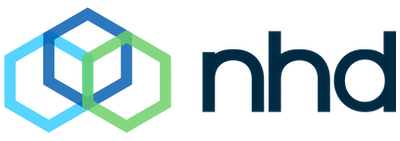
The Shape Shifting Costs of Software Management
Can Savings Shift Their Shape?

In today’s highly digital world, chances are pretty good that you have at some point been impacted by or actively participated in a software implementation or update.
There are many reasons why companies choose to acquire or update their existing software, one of the greatest being the potential cost savings tied to making the changes. Acquiring new software or making upgrades can certainly rack up the savings, but it can also create the opportunity for savings to turn into hidden costs if the company is not careful in how they approach the changes.
Expecting cost savings from a software modification or acquisition that end up leading to higher costs than savings is what we refer to as ‘shape-shifting’ cost savings. Below we will explore a few of the most common types of shape-shifts and look at how they can be mitigated with the proper planning before making a software change.
Shuffling Costs ≠ Company Savings
One of the most common culprits of cost saving shape shifting is the sneaky shuffle of savings from one department to another. This happens when one department incurs cost savings as the result of acquiring or modifying a software that in turn leads to increased costs for another department.
Here is a real-world example of how this shape shifting can take place:
The Procurement department at a multi-million-dollar pharmaceuticals company has recently acquired a new purchasing software that will drastically decrease the amount of time it takes to process purchase orders and make purchases.
With the new software they are expecting to save 8% of their departmental spend from process efficiencies and error reductions, along with an additional 3% incurred from switching software licenses.
The cost savings for the purchase of this software looked great on paper, so it was quickly approved by the Purchasing Director and several other layers of higher management. During the implementation process it was discovered that the support and long-term maintenance of this software would require at least two additional resources in the IT department, given that the new software would not easily integrate with the highly-customized Sourcing software solution that the company installed a couple decades prior.
The IT department promptly added two additional resources to the team and put them to work full-time in supporting the new Procurement software.
The example above shows that cost savings for one department do not necessarily mean cost savings for the company. The solution to avoiding this shape shifting cost is to consider what departments will have secondary impacts from a new software and include them in the request for information (RFI), proposal (RFP), and design/ implementation processes after acquisition.
In the example above, the pharmaceuticals company should have reached out to the Sourcing, Accounting, Operations Support, and IT departments, if only briefly, to see if the software they are considering will work well as part of the end-to-end Source-to-Pay process instead of only looking at the Procurement savings.
Due diligence to this level can certainly add more time to an RFI or RFP process, but you should consider that this up-front diligence cost can reap significant benefits in stopping the cost savings shuffle in the long term.
Overloading Digitalization ≠ Efficiency Savings
This example of a shape shifting cost saving may seem like common sense up front, but it is actually quite sneaky in how it rears its ugly head.
This particular shape-shift usually happens when companies see all the amazing ways a software can save their company money by reducing manual processes, and then turn the newly-found efficiencies into over-bloated digital processes that counteract the original efficiency gains.
Let’s look at a real-world example of this below:
An automotive company implemented a Vendor Management Solution to gain better visibility, efficiency, and control over their corporate contingent labor.
During the software demonstrations the company saw that they can speed up their current hiring process by removing the manual component of sending job postings to each separate job board, and that they can also improve candidate quality by using the software’s proprietary candidate validation feature. They loved the possibilities of getting quality contingent labor into their offices quicker and made this software implementation a high priority.
In the implementation’s design phase, the company saw several flashy features that could be added to the current-state process, including a mandatory candidate comparison pop-up, several data fields for enhanced reporting, and a mandatory bill rate evaluation that added multiple department signatures to each candidate hire.
The example above highlights how easy it can be to get too deep into the weeds of possibilities and counteract any planned efficiency costs. The savings that would have been incurred by removing the manual job board posts and candidate screening calls is now counteracted by several added steps in the process in the form of a different candidate check, additional data entry, and more approvals.
Now, adding additional process steps is not bad in and of itself. In fact, these additions can enhance the ability for the company to meet their goals of improved visibility and control. But this is where the sneaky shape shifting comes in. It can be easy on paper to make the case that the process will be more efficient with a software, but if you then bloat that process by adding more steps you may just be shifting costs from manual work to digital work instead of actually saving. To counteract this shape shifter, start by focusing on truly digitizing your manual processes as they exist in the company today. This will give you a solid picture of what digitalization can save you before modifying the process with enhancements later.
Taking this approach can also save money by avoiding unnecessary bloat that happens when process enhancements are thrown into an implementation with the perception that everything will turn out better simply because it is digital. Take the time to slowly implement process enhancements. It will be worth it!
Buzz Word Participation ≠ Savings
Unless you have been living under a rock you have heard all the hype about AI. Chatbots and contract writing and automated search features and so on and so on. AI is certainly the most notorious example of a buzz word in the professional world. Everyone wants it but few are clear on why they want it, other than being told on every major blog by every large company that it is the future of work.
In our humble opinion, the verdict is still out on what it can actually do vs. what the slick marketing is promising. Now, don’t get us wrong. We are all for innovation and challenging the market to think in new and creative ways. For the purposes of this article, we are simply saying that buying into every new big flashy trend may not actually serve your company in all the ways promised.
So, let’s go back to our example of AI here. This current buzz word is a perfect example on the shape shifting costs that can come from the latest market trends.
Below is an example:
A global chemicals company sees that their purchasing software has a new AI feature available to assist end users in making purchases. This AI guided-buying feature flaunts the ability to walk users through each step of the purchasing process and then predict what they need to buy. It will then select the cheapest options of the anticipated purchases before creating the cart. This AI feature could result in company-wide cost savings by defaulting users to the cheapest products in the software’s catalogues and also save costs in processing efficiency.
In the user testing before implementing the product, the company received feedback that the end users liked the auto-creation of the carts and that every step is guided. Most users could see these features helping them in their purchasing. Once these features were rolled out to the broader company though, complaints started to come in about the amount of time spent deleting the automatically filled carts as users wanted to opt for higher quality and higher cost alternatives. Deleting the carts and overriding the AI recommendations was leading to longer search times in the software.
Over time, frustrated users started to go around the software and conduct purchases directly with the suppliers of choice, clogging up Procurement and Accounting departments with manual requests.
The AI above was added to the software to save the company on product costs and help end users in making purchases, but it inevitably led to more spend leakage and frustrated end users. This example of a shape shifting cost saving reared up over time as the AI pushed users through to a cart that they didn’t necessarily want, leading to increased workarounds and searching.
What was initially cost savings in product selection quickly turned to incurred costs in manual workarounds and product selections.
How can you avoid this shape shifting cost saving?
As with any buzz word, it is worth doing more research to understand how the concept or product could actually help your company. From there it is a matter of doing the due-diligence to put together user cases that go beyond seeing what the end users like in testing and analyze the risks of low user adoption in practice.
In the above case, the shape shift might have been avoided by considering the risk of users not liking their pre-selecting carts and testing that scenario out. That risk scenario could have uncovered the lengthy search process that happens when trying to go against the AI recommendations and led the company to more carefully consider if this available feature is worth it to have the cheapest products always displayed first.
Shape Shifting Cost Savings Recap
Above we featured a few of the most common ways in which cost savings can turn into hidden costs without the proper planning and considerations. Software upgrades and acquisitions can help a company set up long-term patterns of achieving cost savings, but if they are not handled with the proper care, you might see those savings shape shift into hidden costs.
Our three main pieces of advice are to:
- Consider which stakeholders are impacted by software decisions, even if the impact might be minimal, and include their input in the decision-making process for an upgrade or acquisition.
2. Keep it simple up-front when implementing a new software, and consider whether adding new steps that the software can support will help or hinder a cost savings goal.
3. Do not be so quick to jump into implementing every new buzzword feature or process that comes into the market, even if your software has it available for free.
With these tips in mind, we hope you are better armed to go into your software acquisitions or upgrades with confidence that they can achieve cost savings that keep their shape!
Tired Of The Lack Of Transparency In Your External Spend?
Keep your business running smoothly with transparent labour and service procurement.
Simplify all tasks related to the management of the external workforce.
What Our Customers Say
Fully integrating and digitalizing Contractor Management is no easy task – but AES/32 has proven to be worth it in the short time it’s been in use. The dashboard view of work completed and payments due shows what’s on track and bottlenecks for intervention. Returns will multiply significantly as we scale up the number of contractors over time across multiple sites.



